
The Burgersaal (Citizen's Hall, German: Bürgersaal) is a historic building located in the pedestrian area of Munich's old town.
Translated as "Bürgersaal" means "Civic hall" or "Hall citizens".
The building was erected in 1709 and 1710, respectively according to the plans of architect Giovanni Antonio Viscardi as the new chapel and meeting room for meetings of the Marian congregation of men of the community "the Annunciation" (Marianische Männerkongregation), founded in 1610.
Since the original building was not intended for Church services, outwardly it looks like a normal house. During the construction of the building, it was decided to place it on one of the main streets of the city and close to Church of St. Michael Jesuit (St. Michael Kirche), in the gymnasium which was founded the male community of Marianas.
After the consecration of the altar (1778) Burgerzaal officially became a Church and is known as Burgerzaken or Church Burgerzaal (Bürgersaalkirche), also: Civil hall Church "Annunciation".
During the Second world war, the civic hall was demolished down to the exterior walls; only the main facade remains intact. The Church was restored Burgerzaal one of the first in Munich since 1945-1946.
Today the facade is in Baroque architecture in several buildings on street Neuhauser Strasse. Four of the obelisk is crowned with an almost square facade of the building with coral color and white color. The facade is divided by a row of double pilasters on two floors and has an inscription in Golden letters: "DIVAE VIRGINI MATRI / DEVOTI FILII DD. CC. Monac. ANNO MDCCX".
Above the main portal has a figure of the Madonna with the baby in her arms.

Interior space divided into two floors: the upper Church and the lower Church.
The upper Church "Oberkirch" (Oberkirche) in the Baroque style corresponds to the appearance "was Burgerzaal" before its destruction during the war. Only ceiling fresco "Mariae Himmelfahrt", the artist, Martin Knoller in the years 1773-1774 was not reconstructed.
A masterpiece of the upper Church is a relief of the Annunciation, the work of Andreas Faistenberger 1710. It is the only surviving part of the former main altar, destroyed during the Second world war.
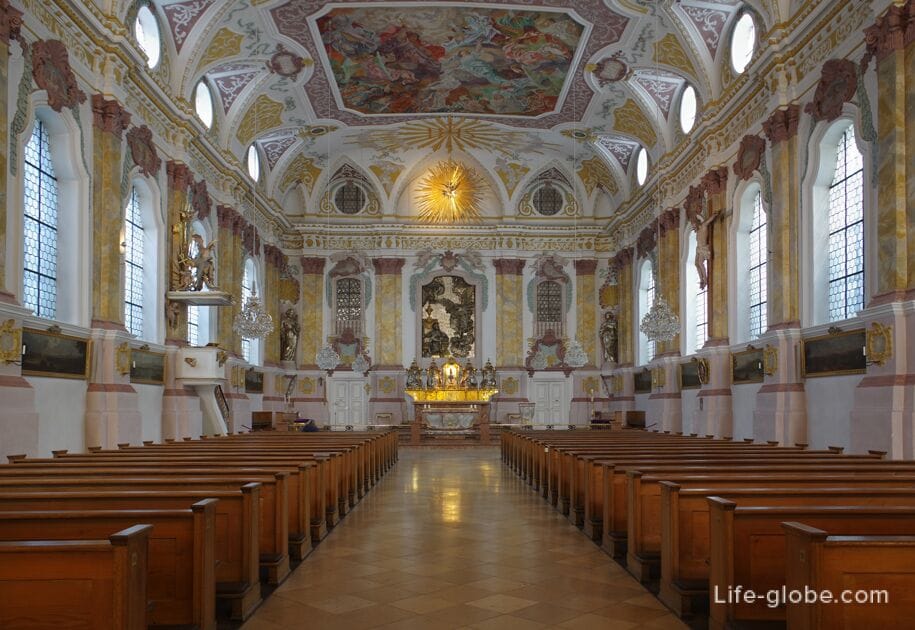

In the upper part of the Church are also the body and the chair.
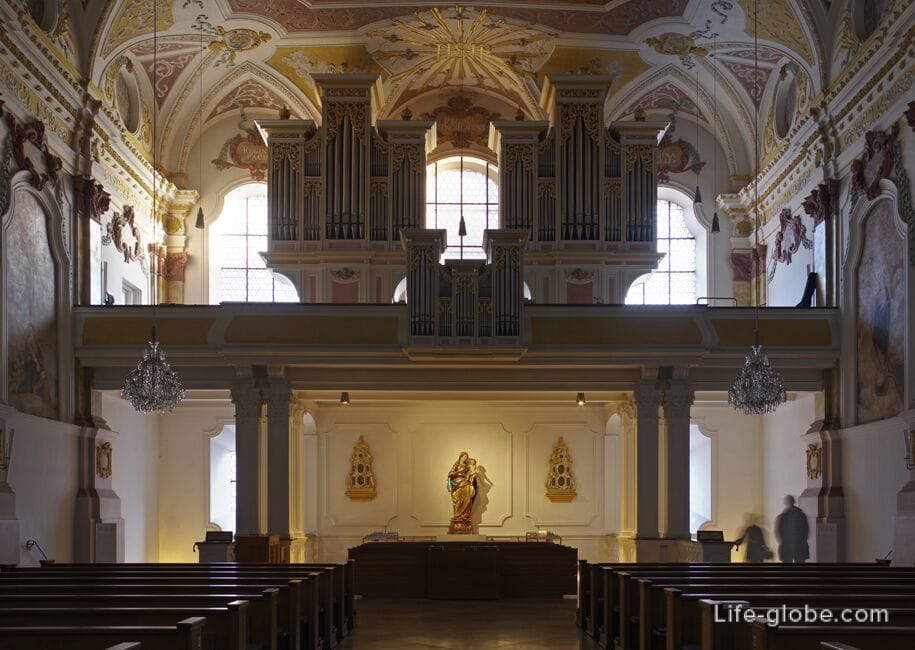

Lower Church "Unterkirche", originally intended for the print collection. Only at the end of the 19th century, three-pass, similar to the crypt room was transformed into a sacred part of the building.
The lower part of the Church, in comparison with the upper, made more simple and restrained. There were no Windows. The space is divided into three naves with arched ceilings.
On the floor in front of the main altar is placed the stone, under which was buried a German priest, a Jesuit, member of the anti-Nazi resistance and the blessed of the Roman Catholic Church - Rupert Meyer (Rupert Mayer). For this reason, the lower Church is the crypt.
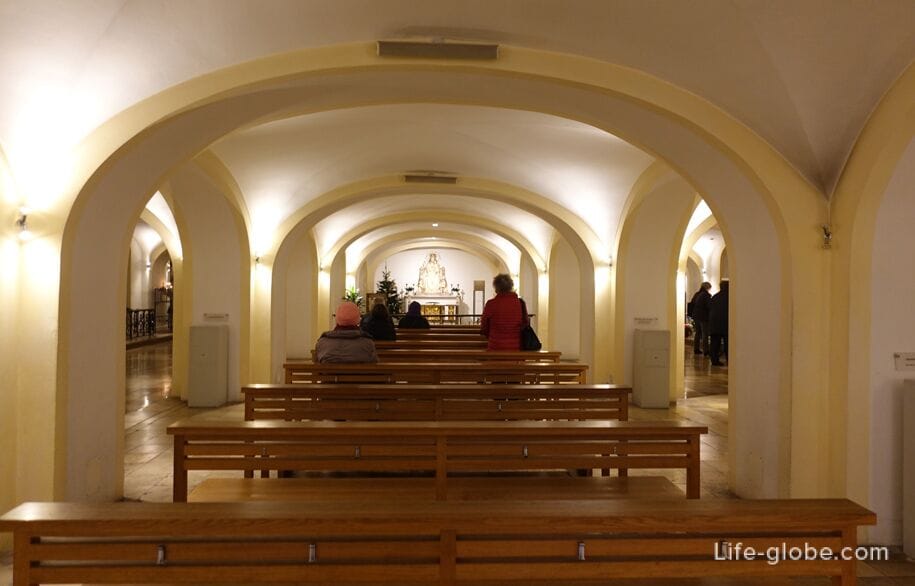
In the side aisles of the lower Church there are sculptures of the stations of the way. The way of the cross was designed by the Munich architect Joseph Elsner, created by his colleague Hans Sprenger and opened in 1898, Archbishop Franz Joseph von Stein.

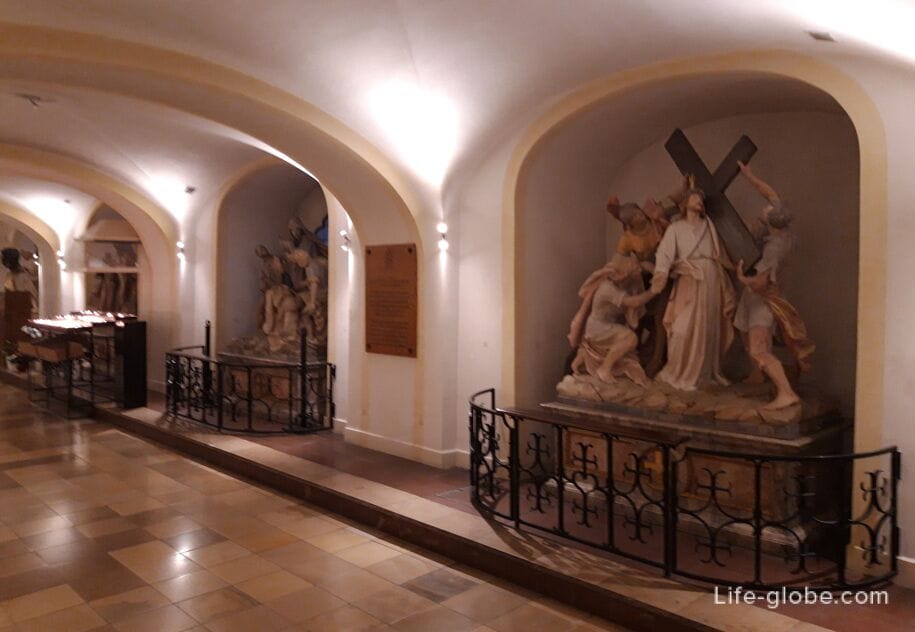
On the lower floor, behind the altar, are the Museum room with memorabilia of the Blessed Father Rupert Mayer and various items, images and artwork of the Congregation.

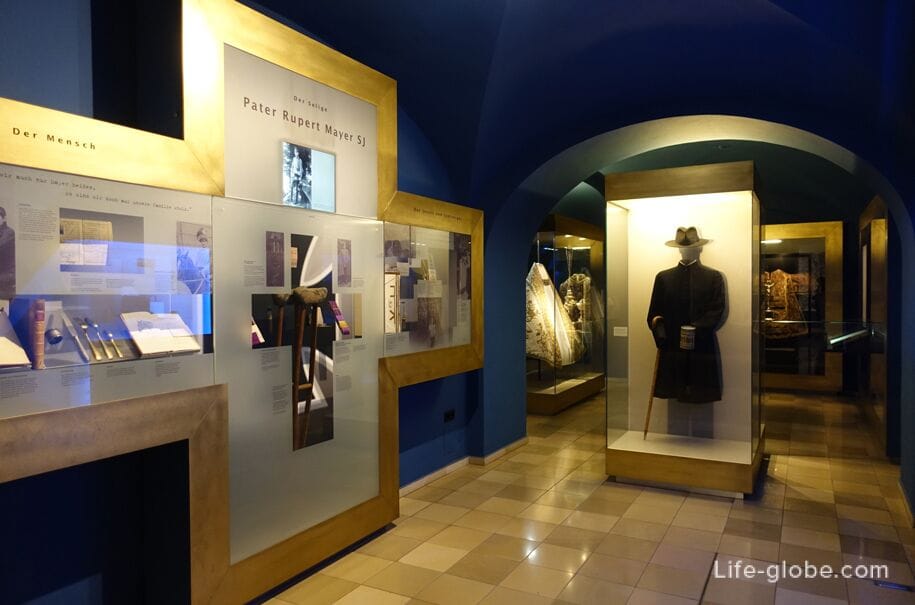
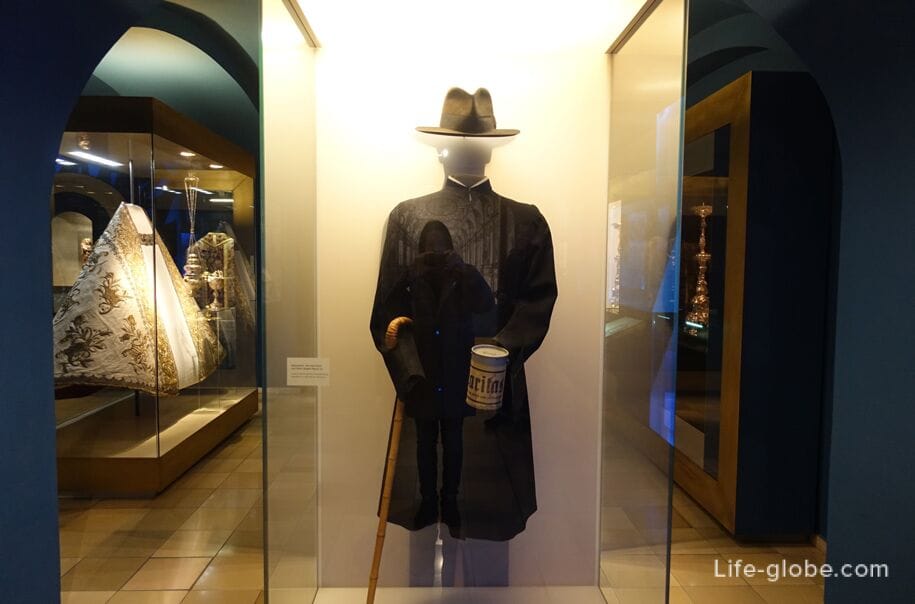

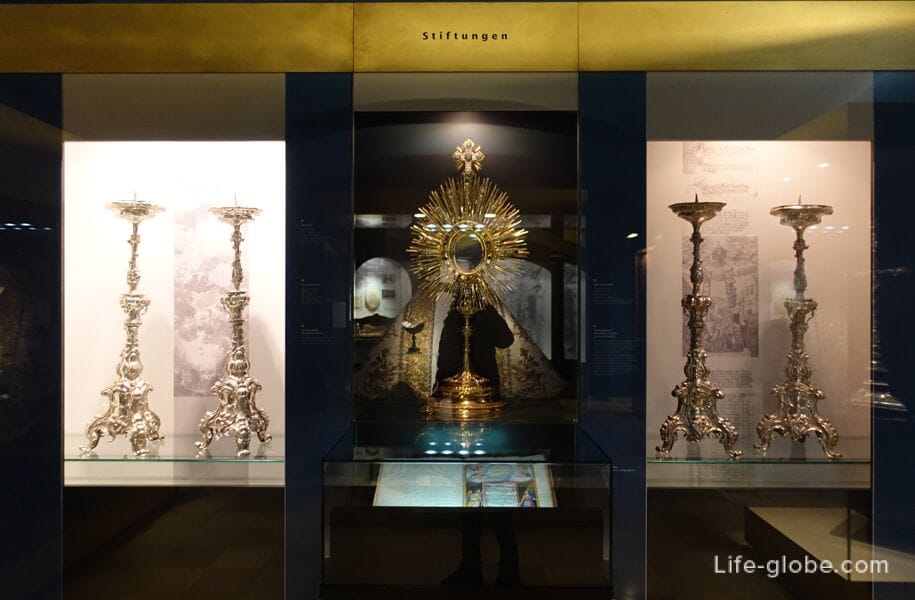
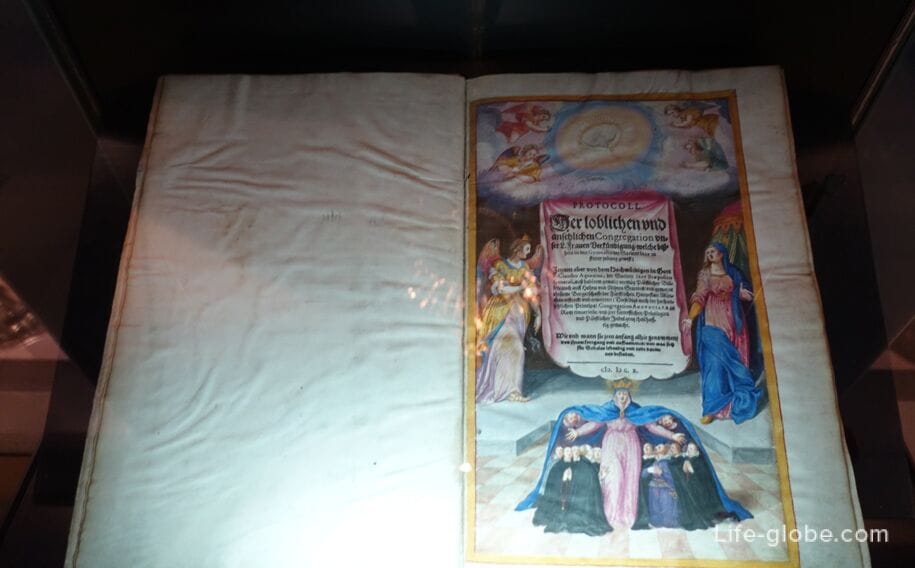

The main masterpieces of the Museum Burgerzaal are:
- sculpture of the Guardian angel with the child, made by the German sculptor Ignaz günther in 1763.
Gunter cut a group of guardian angels for the brotherhood of guardian angels Church of the Carmelites.
The sculptural composition depicts an angel who leads the little boy unharmed on the serpent, symbol of sin, and points him to heaven;
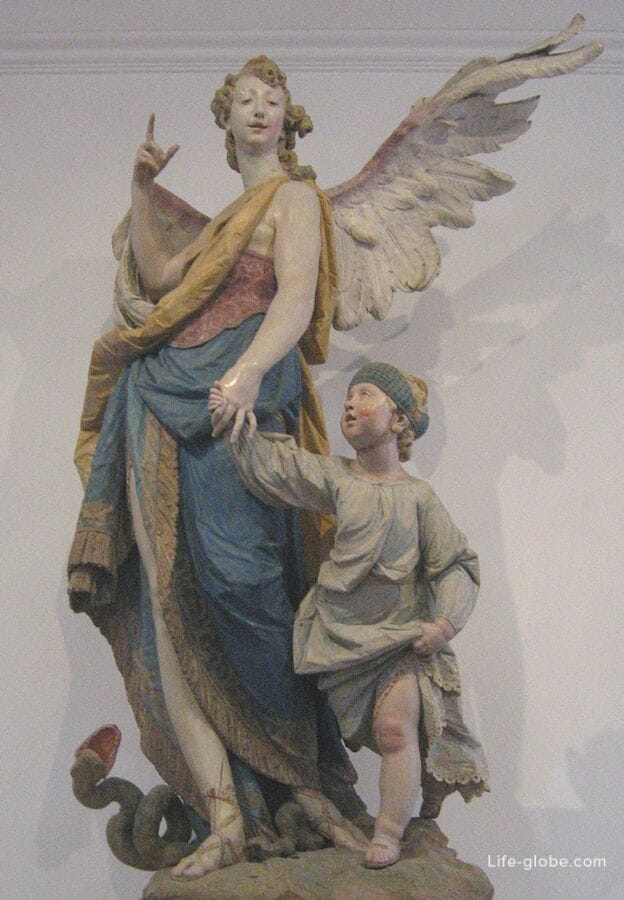
- children's creation of Christ (Augustinerkirche / Augustinerkindl), which belonged to the Augustinian Church from about 1600 and came into the possession of the Congregation for men in 1817, where he is highly revered.
During the Christmas holidays (from Christmas eve to Epiphany) the infant Christ is shown in the upper Church. The rest of the time is in the Museum of the Church;

- the statue of Mary (Madonna Poiska / Madonna von Foy), the work of Hans Degler about 1615, which in may put in the chancel of the upper Church. In the rest of the year the sculpture is kept in the Museum Church.
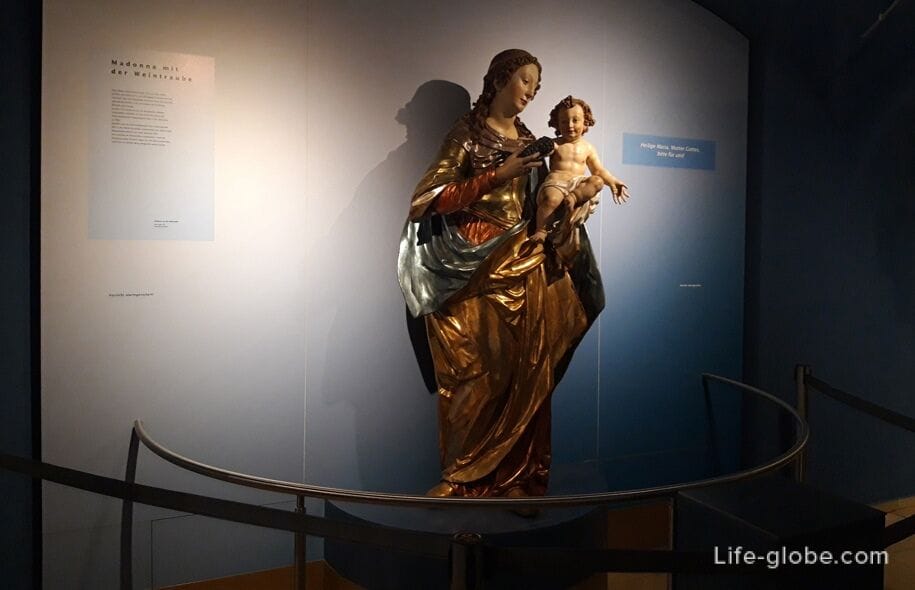
The Burgersaalkirche is located in the western part of Munich's historic old town, near the Karlovy Gate and Karlsplatz.
The main facade and the main entrance of the Church overlooking one of the main shopping and pedestrian streets of "old Munich", address: Neuhauser Strasse, 14 (Neuhauser Str. 14).
Address Burgerzaken: Kapellenstrasse, 1 (Kapellenstraße 1).
The entrance to the Church and Museum rooms free (free).
Site Burgerzaken: mmkbuergersaal.